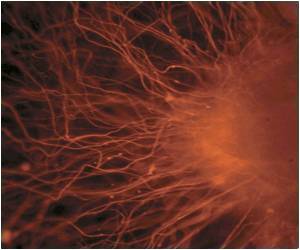The first gene associated with a rare condition in which infants are born without a spleen has been discovered by researchers.

"The great news is that with the appropriate preventive antibiotic treatment these children will not succumb to fatal infections. This test could potentially save lives," says the study's lead investigator, Dr. Licia Selleri, an associate professor in the Department of Cell and Developmental Biology at Weill Cornell Medical College.
Because defense against infections depends, in part, on the spleen, children known to be born without the organ require treatment with a regimen of antibiotic therapy throughout their lives. But most diagnoses of this condition, congenital asplenia, are made during an autopsy after a child dies, suddenly and unexpectedly, from a rapidly lethal infection, usually from bacteria that causes pneumonia or meningitis, Dr. Selleri says. "For those reasons, we believe this condition is not quite as rare as believed. Not every child who dies from an infection is given an autopsy."
Long search for genetic culprits
Patients with congenital asplenia usually lack a spleen as the sole abnormality, but sometimes have abnormalities of the heart and blood vessels. The majority of those cases arise sporadically, so are not believed to be inherited. One form of this disorder is known as Isolated Congenital Asplenia (ICA), characterized by a spleen that is missing but with no other developmental abnormalities. The cause is believed to be genetic, but no candidate genes in humans had been found before this study.
This research project was a collaboration between Dr. Selleri and her colleagues, and Rockefeller University's Dr. Jean-Laurent Casanova, professor in the St. Giles Laboratory of Human Genetics of Infectious Diseases. Dr. Casanova had led a previous study describing 20 ICA patients, of which most children suffered their first serious infection by age one, and nine died of an invasive pneumonia.
Advertisement
Then, in Dr. Casanova's lab, Alexandre Bolze, a graduate student, sequenced genetic samples from ICA patients and analyzed them using whole exome sequencing technology, which allows sequencing of the entire coding genome of multiple patients -- a technique routinely employed by Dr. Casanova. Bolze found that Nkx2.5 was mutated in a family of asplenic patients, some of which died from lethal infections -- confirming the importance of Nkx2.5 in human congenital asplenia as in the mouse model of the disorder.
Advertisement
She says that other patients and families with this disorder need to be studied in order to develop a comprehensive prenatal test. "It may be that there are other mutations that are acting in concert or independently of Nkx2.5 in other asplenic patients," Dr. Selleri says. Those studies in human patients are currently underway in the Rockefeller University lab, while at the Weill Cornell lab additional studies on mouse models are ongoing.
Source-Eurekalert











